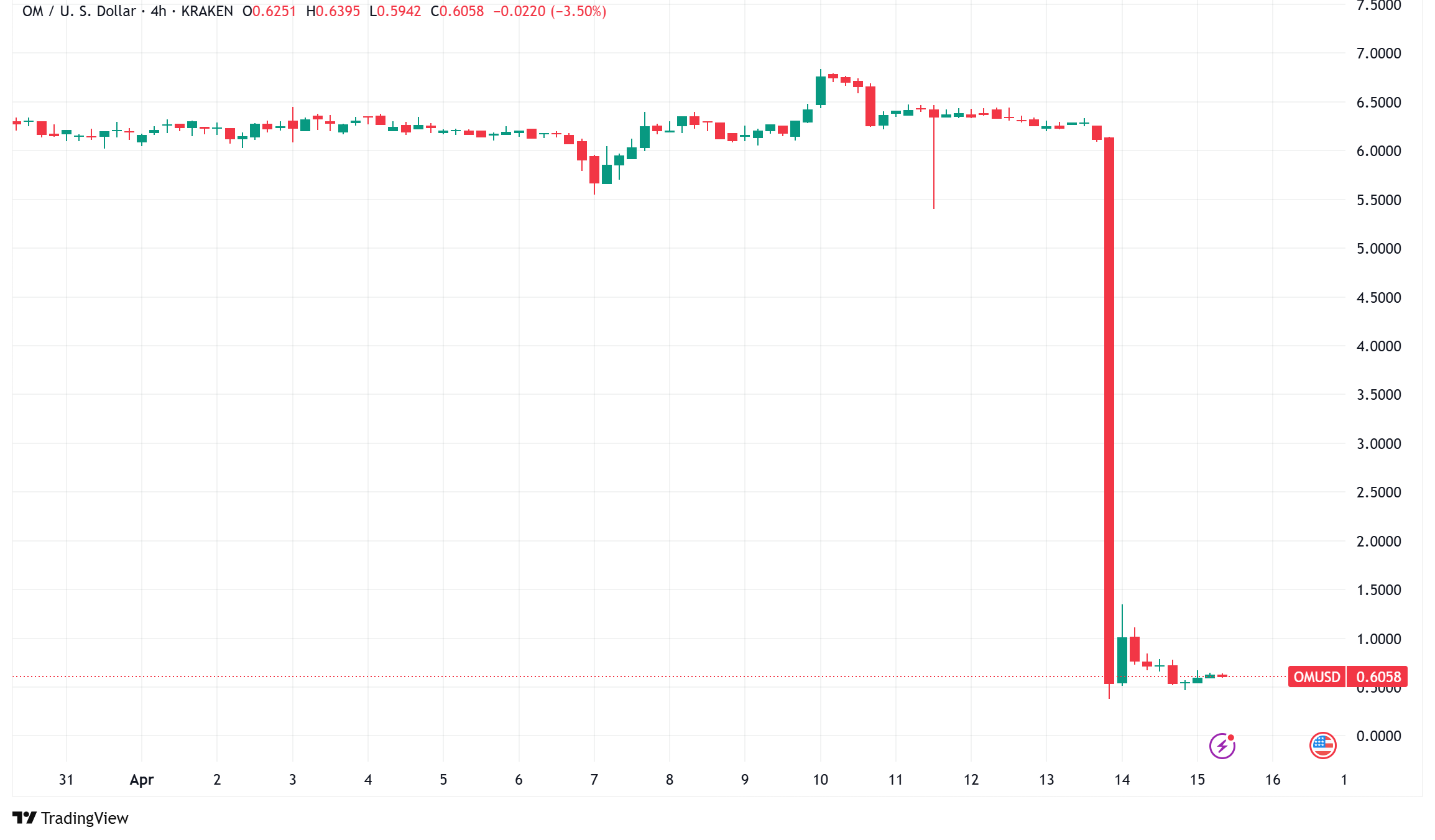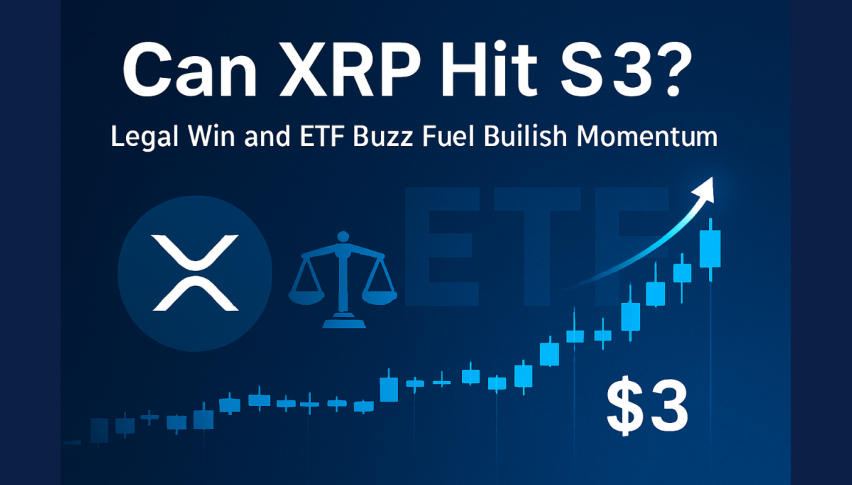Mantra (OM) Faces Recovery Challenges After 90% Market Collapse
Mantra’s OM token is currently holding around $0.60, down by over 24% in the past 24 hours, as the project’s leadership addresses concerns following one of crypto’s most dramatic price collapses in recent memory. The token, which traded above $6 last week, saw approximately $5.4 billion in market value wiped out when it crashed to as low as $0.37, sparking comparisons to the 2022 Terra LUNA collapse.

OM Token Supply Concentration and Liquidity Crisis
The fall seems to have resulted from structural flaws in OM’s token economy. On-chain study claims that the Mantra team supposedly controlled up to 90% of the token supply, leaving just 10–20% freely available on the market. When notable selling pressure developed, this concentration created the conditions for a liquidity crisis.
According to data from blockchain analytics company Arkham, about 4.5% of the circulating supply—17 wallets—collectively transferred 43.6 million OM tokens (value roughly $227 million) to exchanges in the days before the meltdown. The rather thin order books were swamped by this unexpected token flood, which set off a series of forced liquidations almost equal to $67 million in just 12 hours.
“Control the supply, control the narrative—until it breaks,” said Head of Research Alice Liu of CoinMarketCap, explaining how Mantra’s rigorous control of token distribution produced a “artificial illusion” of power that proved unsustainable finally.
Mantra CEO Denies Insider Trading Allegations
Mantra CEO John Patrick Mullin answered questions and refuted claims of insider trading in an Ask Me Anything (AMA) session Cointelegraph sponsored on April 14.
Rejecting assertions that the team or its investors ditched tokens before the fall, Mullin said, “The Mantra association, our key investors, our advisers—no one has sold.” Reiterating a community transparency report published the week before, he also refuted claims that Mantra controls 90% of the token supply.
Mullin said the meltdown started from an unidentified exchange that sold positions when market conditions changed after using OM tokens as collateral. “What happened was basically the exchange took the collateral and started selling, which caused a cascade of sell pressure and forced more liquidations,” he said.
Strategic Investors Distance Themselves
Notable players in Mantra’s ecosystem have been fast to distance themselves from the fall-through. Part of the Nomura Group, trading company Laser Digital located in Switzerland released a statement refuting any role in the crash.
The company said on X (previously Twitter), disclosing wallet addresses showing no deposit or selling activity, “Assertions circulating on social media that link Laser to ‘investor selling’ are factually incorrect and misleading”.
Similar issues had been brought up regarding another big investor, Shorooq Partners. Before the crash, a wallet connected to Shorooq’s Shane Shin got an OM token transfer; Shin denied selling the tokens, explaining it was a wallet-to–wallet transaction instead of a sale to an exchange.
Mantra (OM) Recovery Efforts in “Early Stages”
Though Mullin stressed that OM token recovery is the company’s “preeminent and primary concern,” strategies are still under development. Token buybacks and burns could be among possible actions, however particular specifics are yet unknown.
“We are still in the early phases of developing this strategy for possible token buyback during the AMA session,” Mullin stated.
To assist with recovery initiatives, the business also intends to use its just revealed $109 million Mantra Ecosystem Fund (MEF). Launched on April 7 in association with strategic investors including Laser Digital and Shorooq Partners, the fund comprises OM tokens as well as monetary commitments.
OM/USD Technical Analysis and Recovery Prospects
Technically, OM has showed some tenacity following the first decline, rebounding from its low of $0.37 to momentarily touch $1.10—a 200% bounce—before settling about current levels near $0.59. After the crash, the Relative Strength Index (RSI) reached very oversold conditions—a technical indication sometimes preceding reversals.
Market watchers cite a number of elements that can help OM bounce back:
- Mantra’s emphasis on real-world asset tokenization sets it in a sector estimated to be multi-trillion-dollar market by 2030. Its $1 billion collaboration with Dubai-based DAMAC Group provides access to a $6 billion asset portfolio for possible tokenization.
- Mantra retains alliances with reputable financial companies despite the crash, especially in the Middle East where regulatory clarity for digital assets is developing.
- Projects with compelling benefit propositions could find a supportive climate thanks to ETF investments in Bitcoin and rising institutional interest in Ethereum.
Still, major obstacles still exist include restoring faith in the tokenomics and openness of the initiative. The very high supply concentration that led to the meltdown begs issues about Mantra’s token distribution strategy and governance structure moving ahead.
“Hope rises like a phoenix from the ashes of shattered dreams,” one market participant observed, but whether OM can really symbolize this phoenix-like revival has to be seen as investors closely assess the project’s reaction to this catastrophe.



